Interior design graduates from Falmouth University present projects that aim to create safe spaces for refugees, young mothers and recovering addicts in this VDF school show.
The conceptual designs were created as part of the students’ three-year undergraduate degree, which encourages students to “reimagine the future of interior design”.
Elsewhere at the Virtual Design Festival, Falmouth University is also presenting work from its BA Sustainable Product Design and BA Architecture students.
University: Falmouth University
Course: BA Interior Design
Tutors: Fay Freeman, Jean Whitehead, Amanda Losasso and Stuart Watt
Course statement:
“Falmouth University’s talented undergraduate students reimagine the future of interior design through global concerns such as health and wellbeing, the refugee crisis, environmental issues, fast fashion and overconsumption.
“Our interior design course prioritises forging a personal design direction within interior design. It encourages students to develop innovative, creative solutions that rethink the current status quo as a springboard into the creative industries.
“The final ‘negotiated’ design projects illustrate each student’s personal concerns in an uncertain future. The course’s strengths are its industry partnerships, in line with our ‘doing it for real’ philosophy, as well as its creative cross-disciplinary collaborations and unique location in Cornwall.”
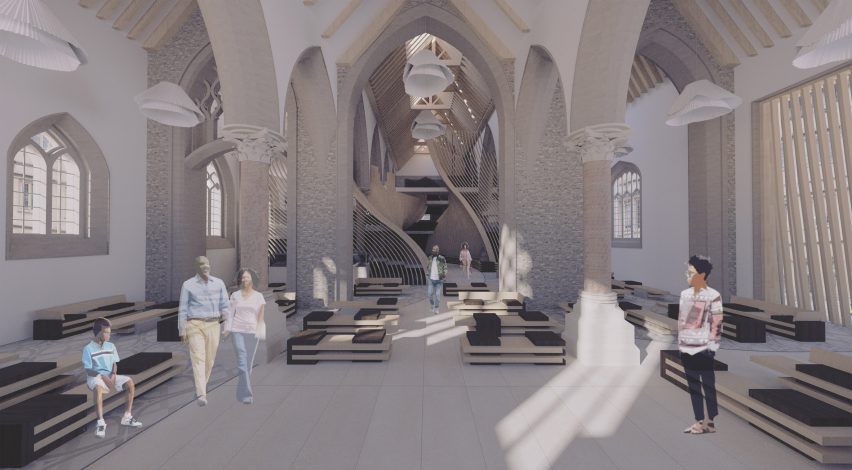
The Nook by Carmen Downing
“This project is concerned with public accessibility and the question of whether Oxford University’s Bodleian library should be available to the wider community outside of academia.
“This design investigation reimagines St Aldates’s church as a space for curation and explores the organic forms associated with the architecture of Zaha Hadid, Frank Gehry, Norman Foster and Santiago Calatrava as a counterpoint to the solidity and rectilinear nature of the site.
“The aim is to create a structure that filters the light from the aisle windows and creates a transparency that allows its dual functions as a library and church to coexist.”
Portfolio: carmendowning.myportfolio.com
Email: [email protected]
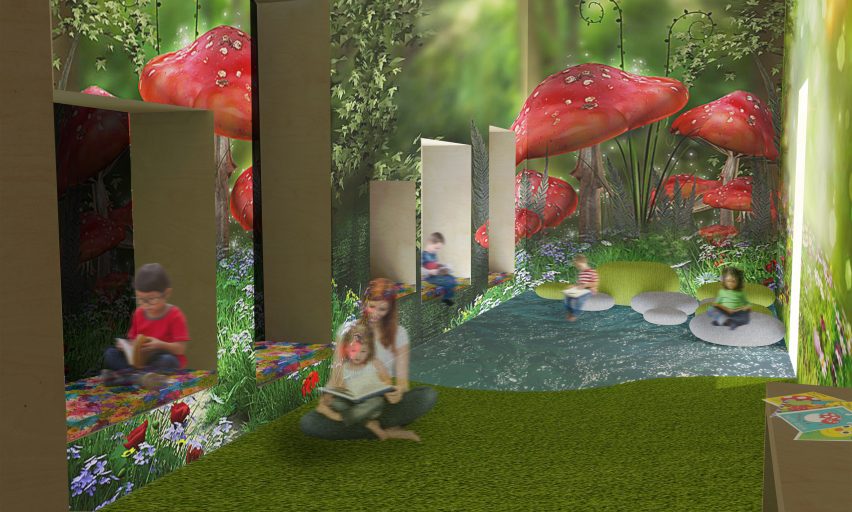
Bright Futures by Kate Terrett
“What happens if you get pregnant at school? This project is designed to support teenage mothers and ensure their children have the best possible start to their lives. Research indicates that isolation is a recurring issue, so the centre operates as a support hub where mothers can live, socialise and benefit from childcare while receiving advice and support from relevant professionals.
“At the heart of the project is a children’s play space, designed to aid their development by encouraging creativity and imagination. This is achieved through a series of carefully constructed spaces, or slots, which offer ‘magical moments’ through decoration.”
Portfolio: kateterrett-design.weebly.com
Email: [email protected]
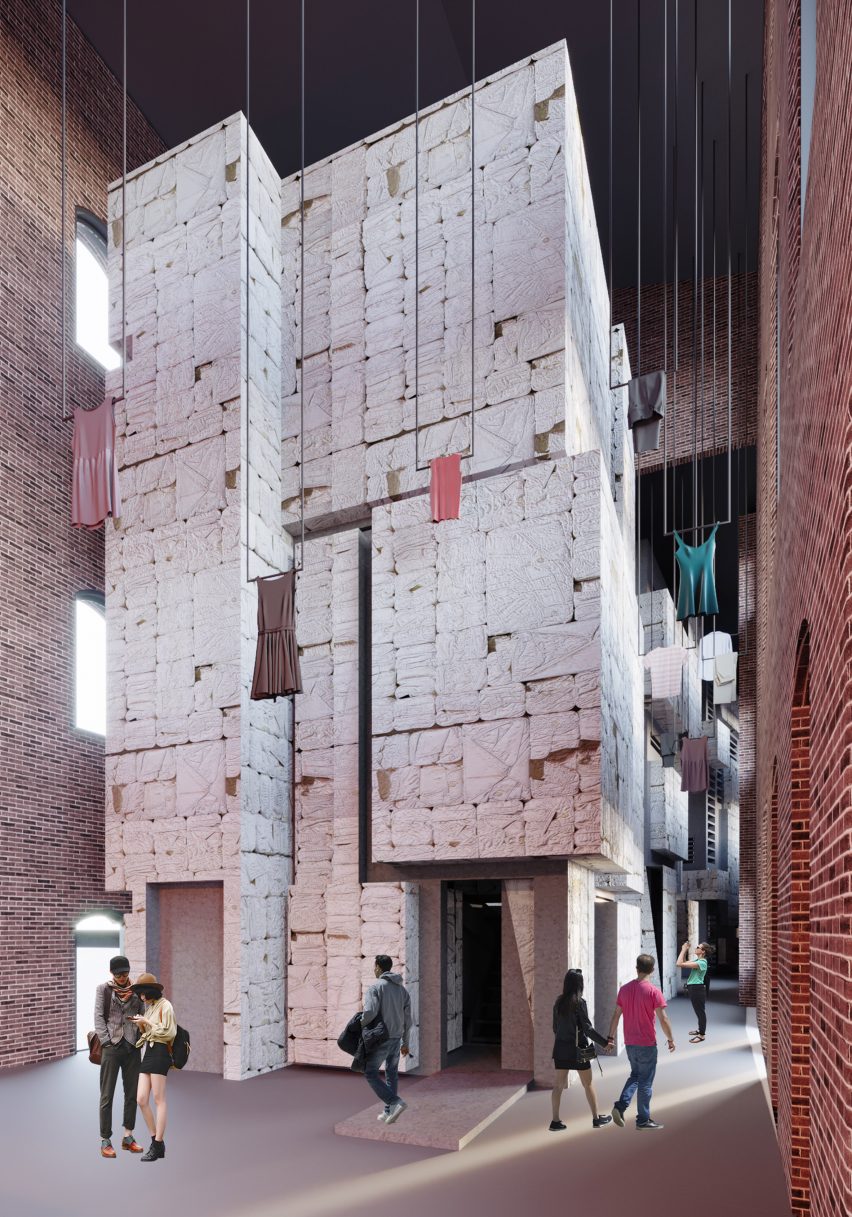
Excess by Elektra Shiers-Gelalis
“How much is too much? This design proposal aims to highlight the waste produced by the fast fashion industry and challenge consumer behaviour. A reversal of traditional retail practices makes products deliberately less accessible so that the customer gains a greater appreciation for the product, reinforcing the mantra of ‘buy less, choose well’.
“The space acts as an immersive retail experience for the brand Vetements. The scheme includes three claustrophobic lookout towers that separate the customer from the merchandise suspended outside. Each tower becomes progressively more intrusive to represent the immense waste we as consumers unthinkingly produce.”
LinkedIn: linkedin.comelektra-shiers-gelalis
Email: [email protected]
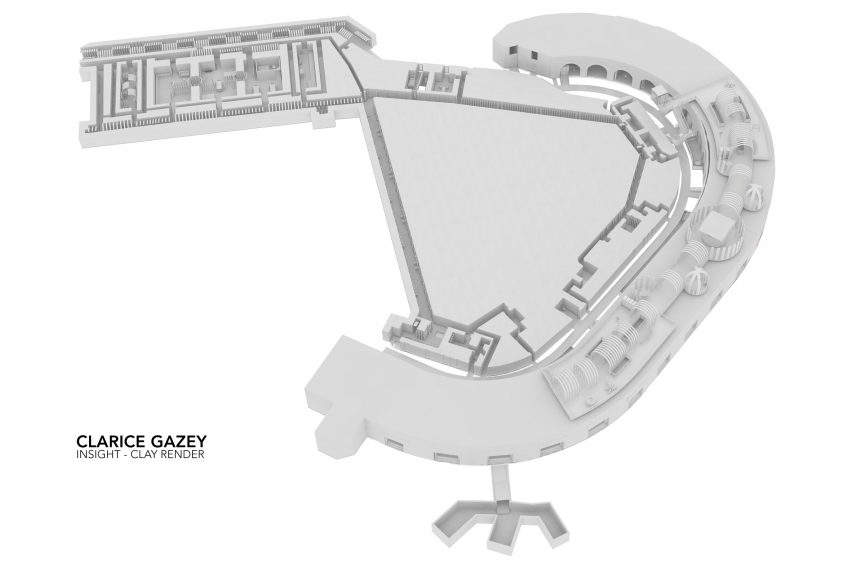
Insight by Clarice Gazey
“How can ill children reclaim their childhood? Located within an ancient secluded monument on Drake’s Island in Plymouth, this project is sensitive to the building’s original features and history. Operating as a medical retreat for children with cerebral palsy, this adaptive reuse project aims to reconnect them with their childhoods.
“A series of scattered arch installations across the site inject colour and form into this derelict building, creating spaces of adventure and exploration as well as pause and recovery while prioritising the needs of the children over their wants.”
Website: claricegazey.wixsite.com
Email: [email protected]
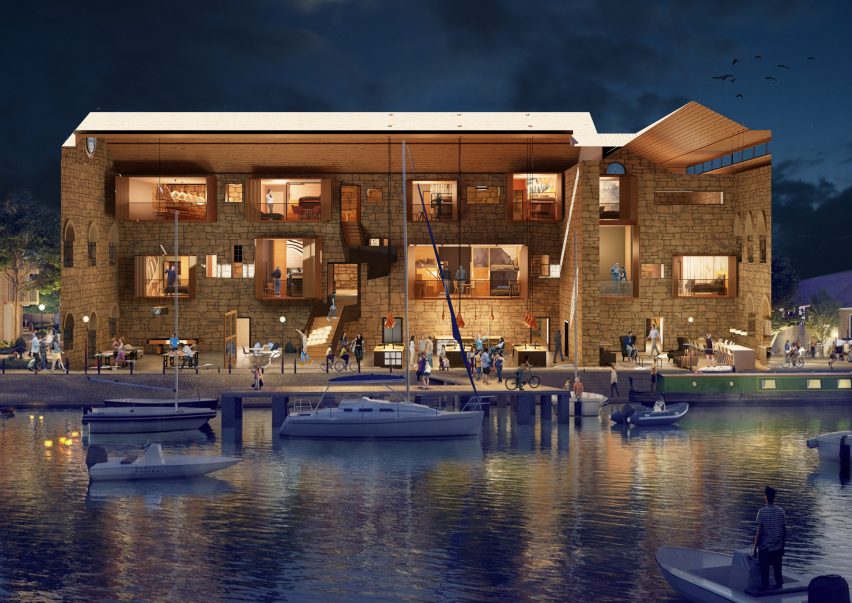
The House of Teens Unite by Sam Viney
“Can the built environment support you in difficult times? The House of Teens Unite connects young people across the UK and helps them to rebuild their lives following a cancer diagnosis. Cancer treatment puts young lives on hold, causing isolation and loss of confidence.
“The retreat offers a homely and sociable atmosphere alongside challenging activities to help them rebuild their confidence and understand that cancer does not have to hold them back.
“I am particularly interested in commercial and branded design, exploring ways that branded spaces can connect with people.”
Website: vineydesign.wixsite.com
Email: [email protected]
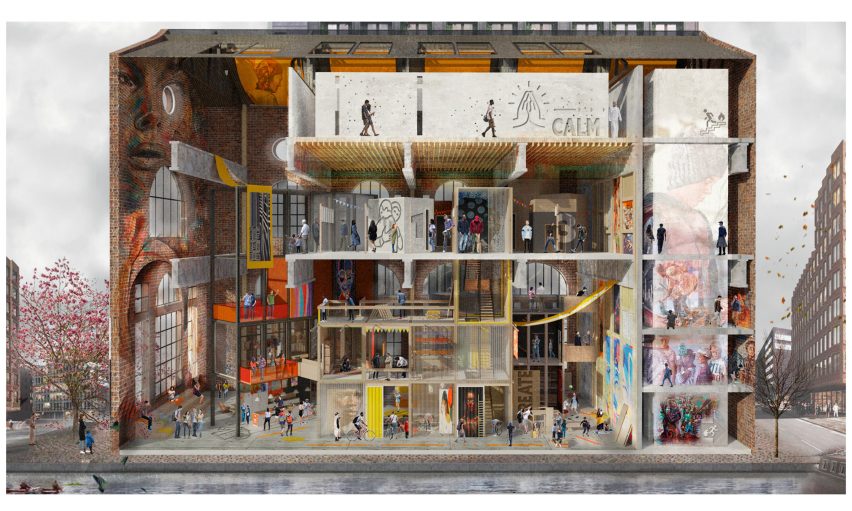
The Re-Build project by Romina Arellano-Templer
“Can design help to tackle the refugee crisis? Located in the Generator Building in Bristol, this project conceptually explores the notion of a micro-city inside of a building. By creating a sense of place, the project allows young refugees to communicate, connect and express themselves without the reliance on language while bringing together communities from different cultures and backgrounds.”
“Activities are integrated throughout, to help visitors acquire a range of different skills that will enable them to begin rebuilding their lives. The expression of individual and collective identity is celebrated and encouraged, creating an atmosphere that fosters a sense of belonging and ownership.”
Email: [email protected]
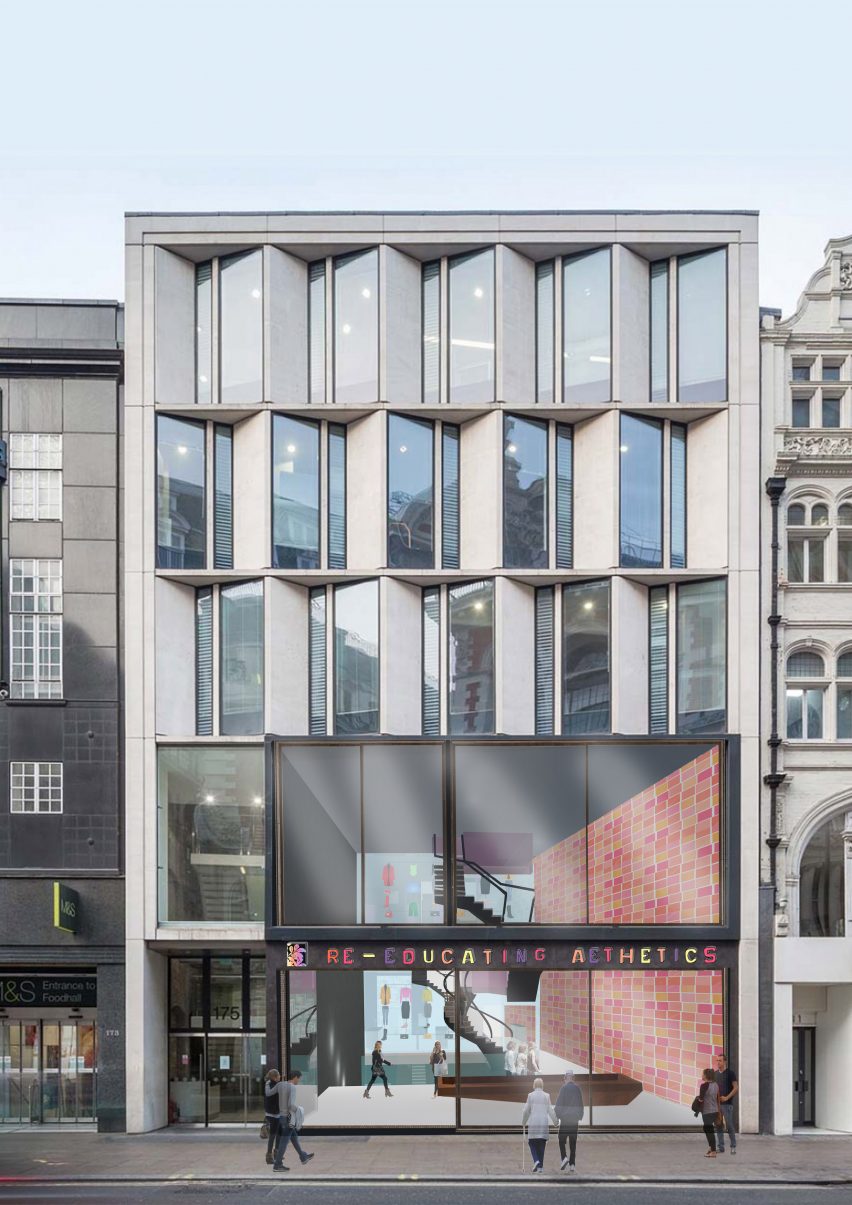
Re-educating Aesthetics by Vicky Horsey
“Can fashion be more sustainable? By imagining a branded experience for fashionistas across London, created by the London College of Fashion in collaboration with Instagram, this project hopes to teach customers about the benefits of upcycling.
“They will be taught how to incorporate different items into their wardrobes before modelling their upcycled clothes on the catwalk.”
Website: vickyhorsey.wixsite.com
LinkedIn: linkedin.com/vickyhorsey
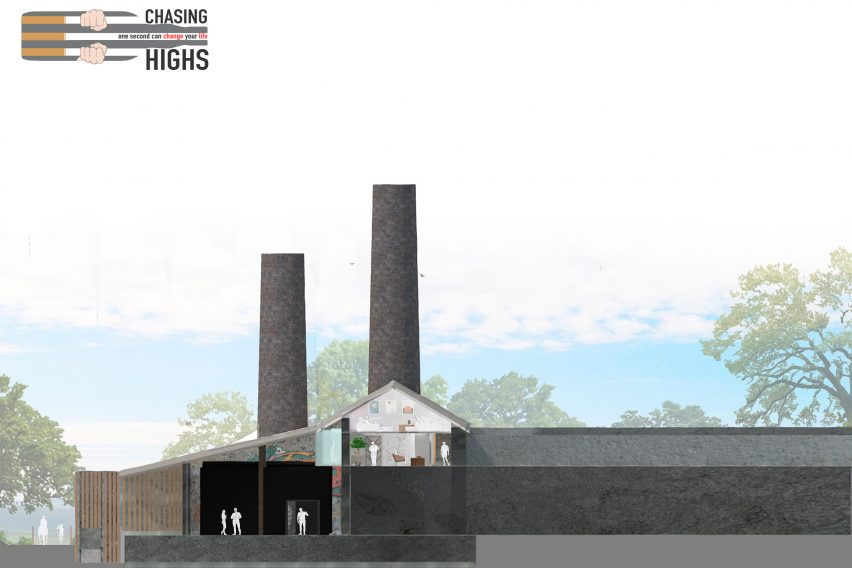
Chasing Highs by Shannon O’Connell
“This project questions how the built environment can respond to the wellbeing of its inhabitants, by employing architectural strategies that manipulate space, light and shadow. The creation of memorable interior ‘encounters’ and their impact on humans is central to this approach.
“This project works as an educational and support system for casual users and recovering drug addicts. A series of spaces will lead the consumer on a thought-provoking journey that enables them to seek support and connect with other people. Ultimately, the experience explores alternative ways that addicts can rebuild their lives.”
LinkedIn: linkedin.com/shannon-o-connell
Email: [email protected]

Project Health by Sophie Lamb
“By focusing on the question of how design can help promote a healthy lifestyle, Project Health addresses the ongoing and increasing issue of obesity. Early background research reinforced the importance of good food, reinforced by an exercise regime, which meant that the kitchen was placed at the heart of the project.
“‘Eat, move and learn’ became the project’s conceptual framework, with the aim of leading users to healthier lifestyle choices. My design approach is firmly grounded in the commercial sector, with a focus on brand-led interiors.”
Website: sl199432.wixsite.com/lambdesigns
Email: [email protected]
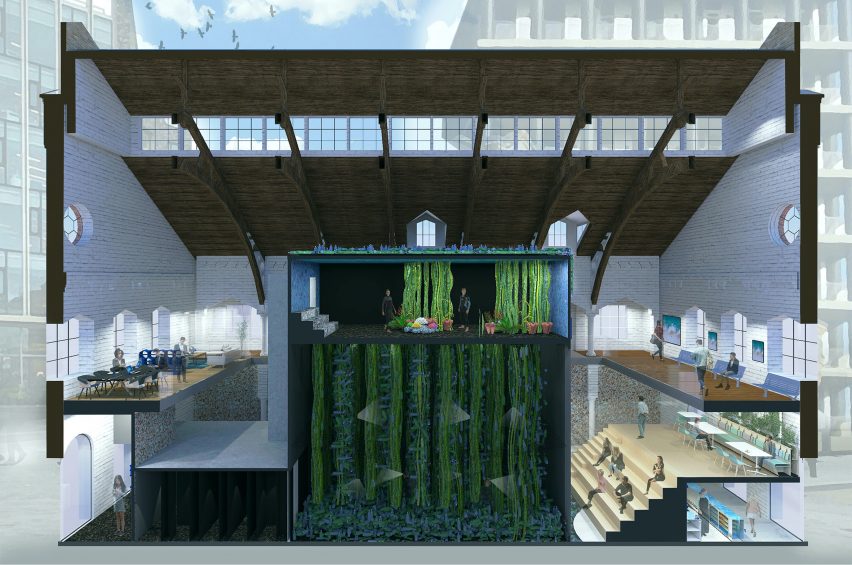
The Deep Blue by Cordy Kent
“According to Plastic Ocean, eight million tonnes of plastic enter the ocean every year. The Deep Blue reimagines The German Gymnasium in London’s Kings Cross as an interactive educational space for the ocean clean-up initiative 4Ocean.
“Users are immersed in an installation that creates the feeling of diving in polluted waters and explores the contrast between the beauty and the beast – the ocean and man-made pollution. In line with the project’s mission, the space itself is designed from sustainable and recycled materials.”
Website: cordykent.wixsite.com
Email: [email protected]
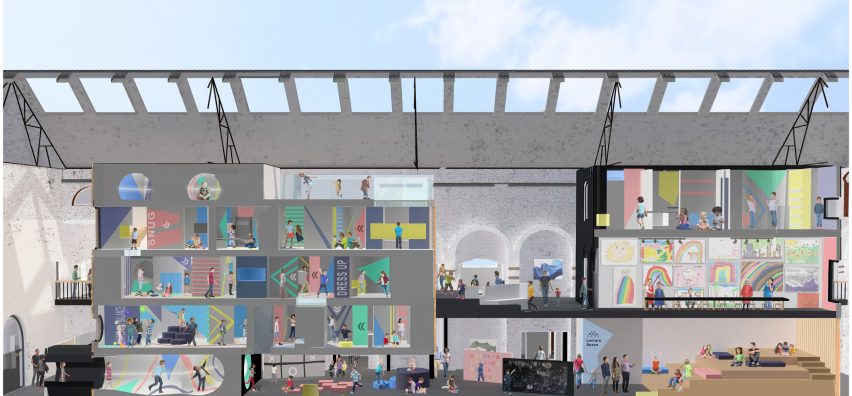
Childscape by Alice Wheal
“My project is a wellbeing centre that explores different play therapies for children aged five to 11, who have experienced some form of trauma. Using play therapy, children can confront and understand the emotions they are feeling and turn them into positive experiences with the help of therapists.
“Within Childscape there are five stimulating playscape levels in which children can explore, imagine and create via various block modules that are inspired by baronial architecture. Each floor relates to a different form of play and stimulates a different area of the brain, ensuring the children are constantly engaged.”
LinkedIn: linkedin.com/alice-wheal
Email: [email protected]
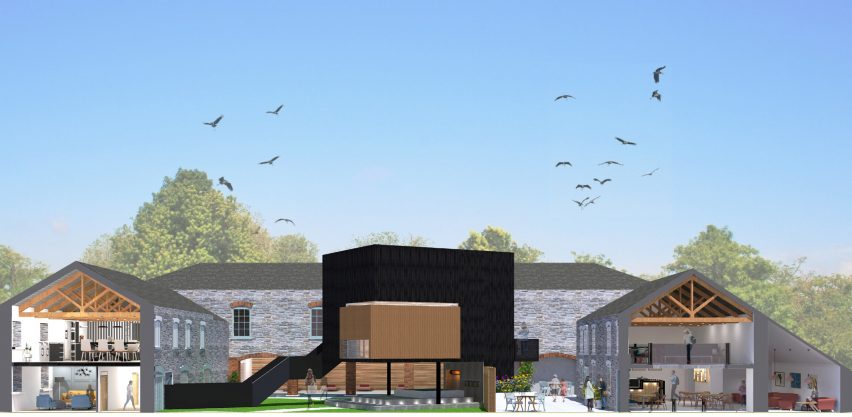
Connected by Bree Smart
“Good mental health is integral to living a healthy, balanced life. And according to the Mental Health Foundation, women are more likely than men to experience mental health problems.
“This project strategically facilitates recovering, sharing and connecting through a series of protected spaces, considered sightlines as well as a mixture of private and public zones. The project partners Accomplish and the National Trust to create a space of refuge and recovery, set within the existing National Trust property of Trelissick Gardens.”
Instagram: @smart_design__
Email: [email protected]

Vessel by Isaac Swan
“Can we keep burying people in the ground? Graveyards are taking up valuable land and resources, so this project reimagines the burial and cremation process.
“It focuses on finding a sustainable solution while creating not just a physical place for burial but also a place for remembrance that utilises land effectively and generates positivity.”
Email: [email protected]
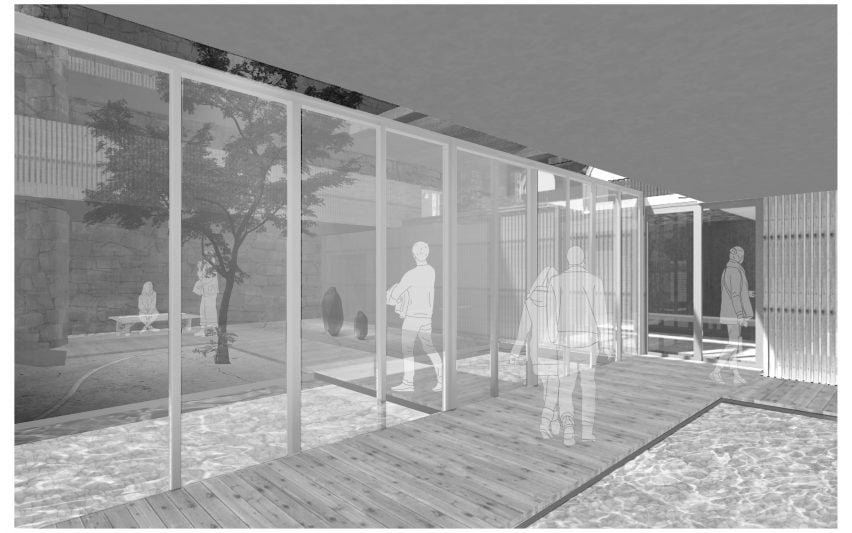
Commune by Phoebe Roberts
“Can interior design enhance natural healing? My approach integrates biophilic design principles and the Japanese philosophy of Wabi Sabi into a wellness space. Wabi Sabi finds beauty in authenticity, imperfection and impermanence. In this setting, it is used to cultivate a calming atmosphere where healing can take place and the body is in rest and repair-mode.
“By bringing together the mind, body and community through design, we can aim to create total physical, mental and social wellbeing.”
LinkedIn: linkedin.com/phoebe-foy-roberts
Email: [email protected]
Virtual Design Festival’s student and schools initiative offers a simple and affordable platform for student and graduate groups to present their work during the coronavirus pandemic. Click here for more details.
Source: Rooms - dezeen.com



